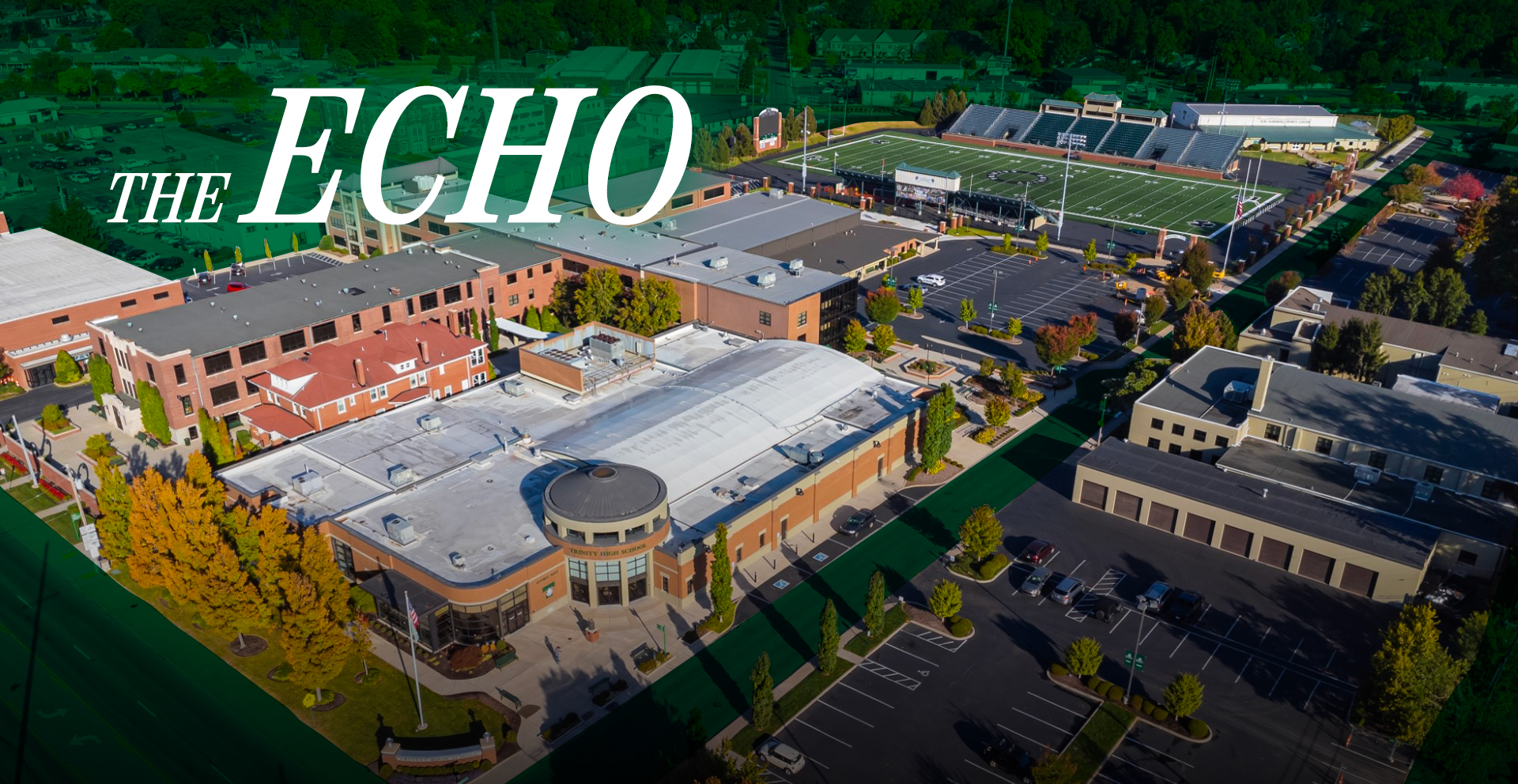Reverbs from the ECHO Chamber — a Q & A with Mr. Chad Waggoner
June 22, 2020

Another in a continuing series of Q & A interviews with Trinity faculty, staff and administrators.
A young Palestinian boy around the age of five or six stares into Mr. Chad Waggoner’s camera lens. The boy then does the unimaginable: in the middle of an ongoing war, he throws up a peace sign. Waggoner takes a picture, a moment that will now last forever. Through his camera and travels, Mr. Waggoner has experienced new perspectives he shares with his community. Additionally, he shoots photos for Trinity sports, which are posted on social media. While Waggoner has a passion for photography, his primary job is a history and film study teacher, which he has been doing for 22 years. He is able to not just instill knowledge in his students. He shows them impactful images that serve as viewpoints for other places in the world.
Q: How did you get into photography?
A: In high school I liked art. Then when I got to college, I started experimenting with cameras. When I graduated college, I used my college graduation money to buy a camera, and that’s when I started getting into photography. But then I had kids, and it wasn’t until about five years ago that I started picking up a camera again when I had some extra money.
Q: Of all the sports you cover for Trinity, which sport is your favorite?
A: Artistically, my favorite to shoot is golf because most of the shots I take are in this beautiful, natural setting. What I have the most fun with is baseball because the guys in the dugout are very inclusive, and the majority of the team is in the dugout having fun with each other. My third favorite is football because my oldest son plays football, and I was on the sideline with him, which was really special. But each sport offers its own neat originality that I like to cover, and it allows me to get to know all sorts of guys here in school.
Q: What’s your favorite part about photography?
A: I would say doing some of the international traveling I have done and getting their stories on film is probably my favorite. The places I go to are a lot of times not your scenic, touristy kind of locations. They’re usually third-world countries; they’re usually people that have little resources, and I come from the United States, where there’s all these wealthy resources, but people are not as happy. In these third-world countries, there’s less resources but a wealthier spirit. Those images are pretty powerful to capture, whether it’s a little kid or an adult that’s living in a mud house the size of a desk. Those stories are my favorite to capture.
Q: Where has been your favorite place to take pictures and why?
A: Kenya is one of the most beautiful places I’ve been to, especially when we’re on a safari and you’re seeing animals in their natural environment. You’re seeing a lion or a cheetah or a leopard or a wildebeest or elephants. Seeing them in their natural habitat, seeing God’s beauty, and seeing the most beautiful sunrises and sunsets that you’ll ever see in the world is truly breathtaking.
Q: What’s impact has photography had on you?
A: I use my camera to tell other people’s stories. I feel that the world is an amazing place, and a lot of times here in the States, we’re very selfish and self-centered. We’re upset because the WIFI’s out for a little bit; we get disgruntled because there’s a storm and there might not be electricity for two hours. I’ve been in people’s homes around the world who literally are living on $600 for an entire year, and they welcome me into their home, feed me and are very proud of what they have and what little they have. To be able to capture their stories and tell them hopefully reminds us that when we go into our place at night, we should be a little more thankful.
Q: What do you enjoy taking pictures of the most?
A: I would say the people I see when I travel. What I feel like I shoot the best, because I’ve had the most practice at, is sports. I feel like I’ve gotten some really good shots to post on the trinityathleticphotos Instagram account. This has occasionally gotten me on another team like the Louisville Bats or Louisville Football Club. Those have been cool experiences to see from the sideline. I also know I have plenty of room to improve.
Q: What do you do to prepare for taking photos?
A: Not too much. Sometimes I’ll set up lighting. But usually I’ll just go to an event and start shooting away. If I was going to do a portrait of a kid in his hut in Africa, that’s going to be a different lighting setting than a Trinity football game, which will have a different setting than a Trinity hockey game or a sunset shot on the Savannah in Africa. But that’s a quick adjustment I can make.
Q: Where else would you like to visit to take pictures?
A: I want my entire passport to be stamped. I want to go to Ecuador and see Machu Pichu. I want to go to Egypt and see the Pyramids. I want to go to China to see the Great Wall. I want to go to Australia and take my camera underwater into the Great Barrier reef before it goes instinct. There’s so many natural wonders and beauties on this planet. There are many places where there’s a culture I want to see.
Q: What do you hope to accomplish from photography?
A: There’s two different aspects of my photography. There’s the Trinity side where I want to make our guys feel like celebrities, feel important. Journalism has changed. When I was in high school, newspapers would carry high school sports, and almost every game would have a sports reporter. High school athletes, especially successful ones, often saw themselves in the paper. The way journalism is now, especially in the city of Louisville, our athletes don’t get carried much. To go to every sport and make them feel they’re important and valued is a thing that I want to show.
The other portion is the humanitarian portion, and that’s to continue to let people know we have it pretty good in the States, and we need to really reflect upon ourselves. We need to remember that if you don’t get the newest iPhone, it’s not worth the sweat. There are more important things in life. So being able to tell the stories of people who are living on $600 to $1,000 a year have a good message. I’m not looking to be the best; I don’t see myself as the best; it’s not a competition. Photography for me is about sharing stories either for Trinity or the world.
Q: How do you see photography evolving?
A: When I first started, it was on film, and I had to develop the film and roll film. There were 24 shots or 36 shots. Your goal was to get one or two good shots a roll, and you had to really finesse the art of framing something that you wanted because you were limited on shots. Now with digital photography, you can just hold down on the shutter and click away. When I leave some of my games, I will have taken over 1,200 photos. There are a few that I’m really proud of and excited to share. The way cameras are on people’s phones, anyone can be a photographer. Apps can make editing so easy, so people can take something that’s decent and make it really, really good. Photography is something that is developing so that more and more people can do it, which is exciting.

